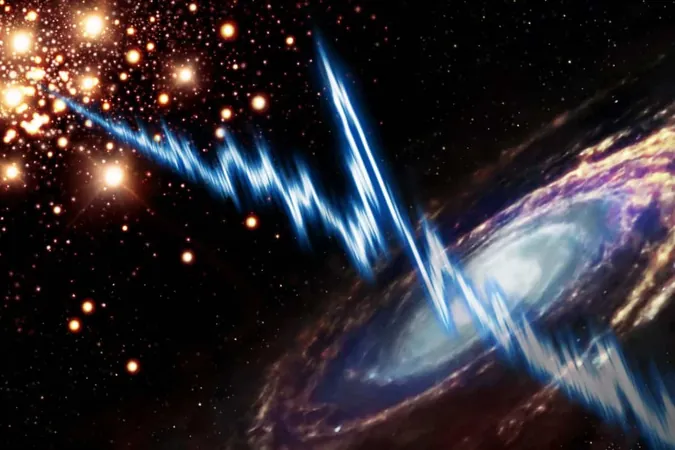
Astronomers Identify Mysterious Radio Signals from Binary Star System—A Breakthrough in Star Evolution Understanding!
2025-03-22
Author: Yan
Unraveling the Enigma of Radio Bursts
For years, astronomers have been mystified by radio bursts that defied classification as known types such as pulsars or fast radio bursts. These enigmatic signals, named long-period transients (LPTs), can persist for several minutes and reoccur on unusual timescales, vastly exceeding the brief emissions characteristic of neutron stars.
The puzzling nature of these signals raised critical questions regarding their origin. Recent studies suggest a definitive source, located over 1,600 light-years away in the constellation Ursa Major.
The Captivating Binary Star System
A dedicated team of researchers from the University of Amsterdam, University of Oxford, and University of Sydney utilized the LOFAR telescope network to track one of these mysterious radio signals. Their findings led them to an intriguing binary star system consisting of a white dwarf, which is the burnt-out core of a former Sun-like star, and a red dwarf, a cooler, low-mass companion.
What makes this system particularly captivating is that the two stars orbit each other every 125 minutes, creating intense conditions believed to be responsible for producing the unusual radio pulses detected from Earth.
The Mechanism Behind the Radio Waves
Current theories suggest that the white dwarf’s powerful magnetic field is a primary contributor to the radio emissions. It may be rotating and releasing energy bursts in a manner akin to a lighthouse beam. Alternatively, the interaction between the magnetic field of the white dwarf and that of its red dwarf companion could be generating the signals. Regardless of the precise mechanism, this discovery challenges longstanding theories about the origins of radio emissions in our universe.
A New Phenomenon in Cosmic Signals
Historically, coherent radio emissions have predominantly been associated with neutron stars—explosive remnants following supernova events. This exciting discovery indicates that white dwarfs can also produce strong, repeating signals, expanding the narrative of cosmic phenomena.
Dr. Kaustubh Rajwade, an expert in LPTs, remarked, 'Every new discovery unveils essential insights into the extreme astrophysical objects that generate radio emissions. The unexpected coherent radio emissions from our studied white dwarf could provide an unprecedented look into the evolution of magnetic fields in these stars.'
This finding not only broadens the field of radio astronomy but also raises the intriguing possibility that many more unusual stellar systems remain to be discovered.
Unlocking the Secrets of Galactic Forces
These long-lasting radio pulses provide an invaluable glimpse into the subtle yet powerful activities occurring within the Milky Way. Unlike dazzling explosions or bright flares, LPTs deliver significant insights into the processes involved when stars approach the end of their lifecycle and when magnetic fields converge.
With each signal identified and each system explored, astronomers are gradually uncovering the hidden rhythms echoing throughout our galaxy, revealing new layers of cosmic understanding that push the boundaries of our knowledge.
Stay tuned, for as we keep exploring the universe, the next cosmic revelation could be just around the corner!



 Brasil (PT)
Brasil (PT)
 Canada (EN)
Canada (EN)
 Chile (ES)
Chile (ES)
 Česko (CS)
Česko (CS)
 대한민국 (KO)
대한민국 (KO)
 España (ES)
España (ES)
 France (FR)
France (FR)
 Hong Kong (EN)
Hong Kong (EN)
 Italia (IT)
Italia (IT)
 日本 (JA)
日本 (JA)
 Magyarország (HU)
Magyarország (HU)
 Norge (NO)
Norge (NO)
 Polska (PL)
Polska (PL)
 Schweiz (DE)
Schweiz (DE)
 Singapore (EN)
Singapore (EN)
 Sverige (SV)
Sverige (SV)
 Suomi (FI)
Suomi (FI)
 Türkiye (TR)
Türkiye (TR)
 الإمارات العربية المتحدة (AR)
الإمارات العربية المتحدة (AR)